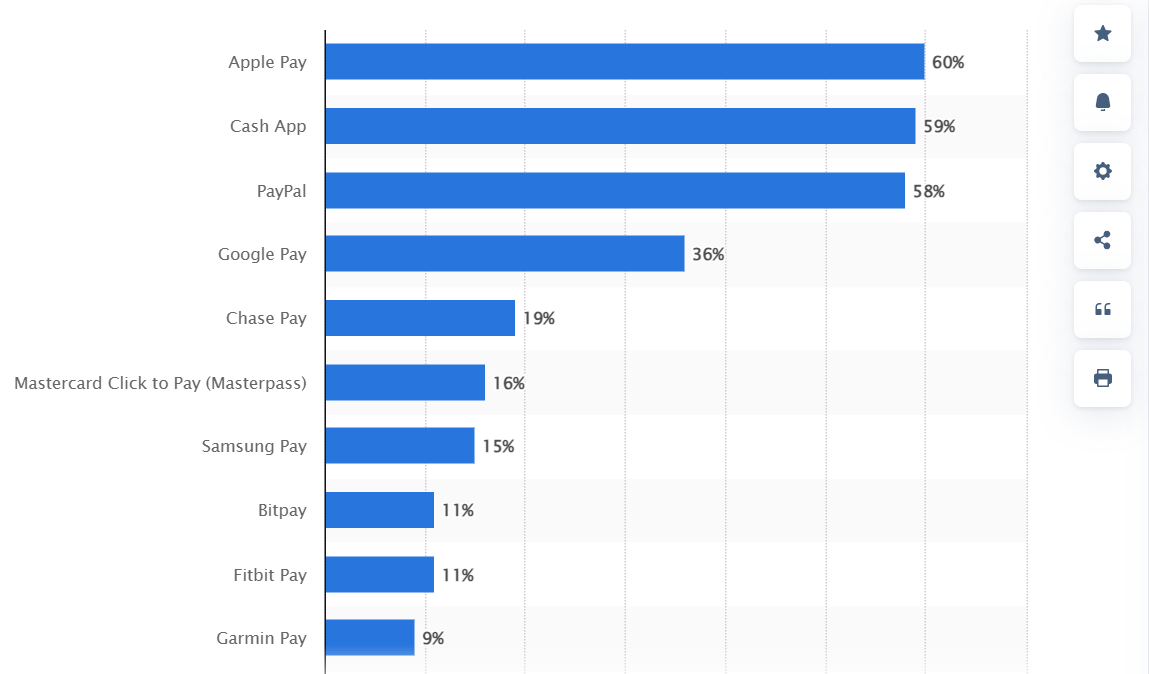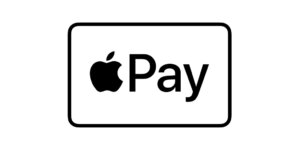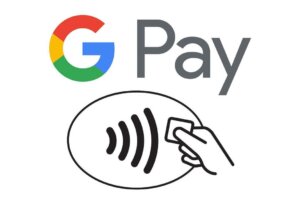The global mobile payments market is expected to reach USD 408.96 billion by 2029. The switch to digital wallets is not only convenient, but also symbolizes the general trend towards digitalization, reflecting the changing needs of modern society and the seamless integration of technology into our daily routines.
This article delves into the world of mobile wallets, exploring their functionality, types, benefits over traditional wallets, and provides a ready-made solution for mobile wallet development.
Table of contents
What is a mobile wallet?
A mobile wallet is like a digital version of a physical wallet. It is an app or service on your smartphone that stores your payment information, loyalty cards, tickets, and other digital assets. With a mobile wallet, you can pay for everyday services directly from your phone, without needing to carry cash or cards.
This is not only convenient but also safer and faster, as mobile wallets allow for contactless transactions. They are especially useful in situations where minimal contact is preferred. The increasing demand for mobile wallets demonstrates a significant shift in financial transaction methods.
Digital wallet vs. mobile wallet
Although the terms ‘digital wallet’ and ‘mobile wallet’ are frequently used synonymously, a subtle difference exists between them. A digital wallet can be any electronic device or online service that allows an individual to make electronic transactions.
A mobile wallet, however, is a specific type of digital wallet designed for use on smartphones. It’s this specificity that makes mobile wallets uniquely suited for tap-to-pay transactions at physical stores.
How does a mobile wallet work?
Empowering users to make transactions using their smartphones, these digital companions redefine the way we handle finances. The following steps unveil the seamless journey from installation to transaction:
- Enter your card information into the app or website.
- The information is then encrypted and securely stored in the app.
- Once you authorize a transaction, the data is sent to the bank.
- The bank then transfers the money to the merchant account.
This online payment system offers a great alternative to cash payments. You don’t need to carry your card with you for every transaction. All you need is a smartphone and an internet connection. This is why mobile wallets have become increasingly popular worldwide.
Types of mobile wallets
There are various types of mobile wallets, each offering unique transaction capabilities. Understanding these types can help you choose a wallet that best suits your needs.
Types of mobile wallets available:
- Open wallets
- Semi-closed wallets
- Closed wallets
Each type of wallet offers unique benefits, and your choice depends on your specific needs and preferences.
| Wallet type | Functionality | Usage | Example |
| Open | Allow transactions beyond the issuer’s ecosystem and cross-ecosystem transactions | Wide acceptance across various merchants, and withdrawals | Google Pay, Apple Pay, Samsung Pay |
| Semi-closed | Facilitate payments within a specific network; restricted to network-specific transactions | Limited to affiliated merchants and services, suits for loyalty programs | PayPal, Venmo |
| Closed | Restricted to transactions with the issuer only; limited external transaction capabilities | Exclusive use with the wallet provider; often tied to a particular brand or service | Starbucks’ mobile app, retailer-specific apps |
Benefits of mobile wallets over traditional wallets
Enhanced security
- Cutting-edge encryption: Mobile wallets employ advanced encryption techniques to safeguard user data during transactions, ensuring a secure and protected payment environment.
- Tokenization technology: By utilizing tokenization, mobile wallet payments add an extra layer of security. Instead of transmitting sensitive card information, a unique token is used, minimizing the risk of data breaches.
Convenience and efficiency
- Swift and seamless transactions: Mobile wallets offer a quick and hassle-free payment experience. Users can make transactions with a simple tap or scan, significantly reducing the time spent during the checkout process.
- Elimination of physical cards: The need for carrying multiple physical cards is eradicated, streamlining daily activities and reducing the risk of loss or theft associated with traditional wallets.
Integration capabilities
- Diverse payment methods: Mobile wallets can integrate various payment methods, allowing users to link multiple credit cards, debit cards, and even digital currencies.
- Loyalty program integration: Mobile wallets seamlessly incorporate loyalty programs, enabling users to accumulate rewards points, access exclusive discounts, and enjoy personalized offers based on their spending habits.
- Digital asset management: Beyond payments, mobile wallets can manage digital assets such as boarding passes, event tickets, and coupons, offering an all-in-one solution for users.
Accessibility and versatility
- 24/7 access: Mobile wallets provide the flexibility of making transactions anytime and anywhere, as long as the user has their smartphone.
- Cross-border transactions: Many mobile wallets support international transactions, allowing users to make payments in different currencies without the need for physical currency exchange.
Environmental impact
Reduced paper and plastic usage: The transition to mobile wallets aligns with eco-friendly practices by minimizing the need for physical cards, receipts, and other materials associated with traditional wallets.
The multitude of benefits makes mobile wallets a compelling choice for those seeking a modern and efficient payment solution.
Prominent mobile wallet examples
Today’s market offers numerous mobile wallets, each with its own unique set of features and capabilities. According to Statista, the most popular mobile wallets are Apple Pay, Google Pay, Cash App and PayPal.
These platforms have risen to popularity, each bringing its distinctive strengths to the forefront, shaping the landscape of digital transactions and redefining the way users engage with their finances.
Most used mobile payments

Source: Statista
 Apple Pay
Apple Pay
Apple Pay is a widely-used mobile wallet available on iOS devices, allowing users to make secure payments using their iPhones, Apple Watches, and iPads.
Key features of this mobile wallet include integration with biometric authentication (Touch ID or Face ID), support for in-store and online transactions, and compatibility with a variety of merchants globally.
Apple emphasizes user privacy and has designed Apple Pay to minimize the collection of personal information. Transactions are not linked to users’ Apple IDs, and Apple does not store transaction details.
 Google Pay
Google Pay
Google Pay is a mobile wallet developed by Google, compatible with both Android and iOS devices. It enables users to make contactless payments and manage financial transactions.
Integration with Google’s ecosystem, support for contactless payments through NFC technology, and the ability to store loyalty cards and tickets. While other mobile wallets offer unique features, Google Pay’s cross-platform compatibility, integration with Google services, and diverse functionalities contribute to its prominence in the mobile payment landscape.
 PayPal
PayPal
PayPal is a widely-used digital wallet that goes beyond traditional payments. While PayPal serves as a mobile wallet, it offers a comprehensive suite of financial services beyond basic transactions.
It includes peer-to-peer payments, online shopping integration, buyer and seller protection, and cryptocurrency support. PayPal offers buyer and seller protection programs. Buyers are protected against unauthorized transactions or items not received, while sellers are safeguarded from certain types of fraudulent claims.
These mobile wallets have been successful in the market, demonstrating the practical applications of mobile wallets in everyday life.
Technologies behind mobile wallet payments
Mobile wallet transactions are made possible through a combination of several technologies, ensuring secure and efficient payments. These technologies include Near Field Communication (NFC), tokenization, and biometric authentication, all of which work together to create a seamless payment experience.
Near Field Communication (NFC)
Near Field Communication (NFC) is a wireless technology that is used for contactless mobile wallet payments. It allows communication between NFC-enabled credit cards or mobile wallets and special card readers. When an NFC-enabled mobile device comes close to a card reader, the reader emits a signal that triggers a secure and fast exchange of payment information for processing.
Tokenization
Tokenization is a key technology for securing mobile wallet payments. During a transaction, sensitive payment information like credit card numbers is replaced with unique tokens, ensuring that payment details are never exposed to potential security threats. However, tokenization can also present challenges, such as the risk of phone cloning or malware targeting virtual card information.
Biometric authentication
Biometric authentication provides an additional layer of security to mobile wallet payments. Technologies such as fingerprint scanning and facial recognition are used to authenticate transactions, preventing unauthorized access to your mobile wallet. Biometric payment systems store an encrypted numeric representation of the biometric data to maintain user privacy.
SDK.finance mobile wallet solutions
SDK.finance as a scalable FinTech Platform for businesses looking to launch their own mobile wallet. In contrast to building software from scratch, our ready-made solution accelerates time-to-market, so you can monetize your product faster and stay ahead in the competitive FinTech market.
How does SDK.finance support mobile wallet development?
SDK.finance offers a comprehensive suite of features and services to support businesses in developing customizable and secure mobile wallet solutions. Here’s a detailed breakdown of the features and services provided by SDK.finance:
Customizable Platform
SDK.finance provides a ready-made platform that can be fully customized to meet the specific requirements and branding of businesses. It includes white-labeling, UI/UX design, branding elements, and feature sets tailored to the target audience.
Robust security
Robust security measures are integrated into the platform to safeguard sensitive financial data and protect against fraudulent activities. Security features include encryption techniques, multi-factor authentication, biometric authentication, tokenization, and real-time fraud detection.
Support for various payment methods
SDK.finance supports a wide range of payment methods, including credit/debit cards, bank transfers, mobile wallets, digital currencies, and alternative payment methods. Integration with payment gateways and processors enables seamless processing of transactions across multiple channels and currencies.
API-first approach
SDK.finance provides APIs for seamless integration with third-party services, applications, and systems. The Platform also comes equipped with pre-integrated vendors for key functionalities such as payment acceptance, card issuance, and KYC compliance.
Wrapping up
Mobile wallets are having a significant impact on how we conduct financial transactions. With their convenience, security, and versatility, they have become a compelling choice in the ever-evolving digital landscape.
By leveraging SDK.finance’s payment Platform, businesses can develop fully functional and secure mobile wallet solutions that cater to the diverse needs of modern consumers while gaining a competitive edge in the rapidly evolving FinTech landscape.
- SEO Powered Content & PR Distribution. Get Amplified Today.
- PlatoData.Network Vertical Generative Ai. Empower Yourself. Access Here.
- PlatoAiStream. Web3 Intelligence. Knowledge Amplified. Access Here.
- PlatoESG. Carbon, CleanTech, Energy, Environment, Solar, Waste Management. Access Here.
- PlatoHealth. Biotech and Clinical Trials Intelligence. Access Here.
- Source: https://sdk.finance/what-is-a-mobile-wallet/



